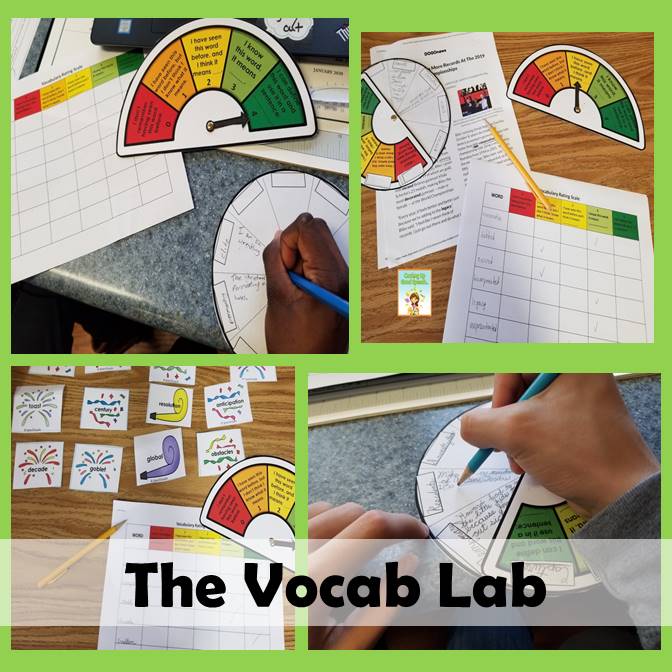
How well do your students understand the vocabulary they are learning?
When addressing vocabulary in my sessions, my students will often tell me that they know what a word means, however after further investigation, I often find that they can actually only provide a vague description or application of the word. I needed to find a better way for them to express their true understanding and then help them increase their knowledge and confidence in word meanings.
I wanted to give them a tangible, hands-on way of expressing themselves when talking about vocabulary knowledge. That’s why I created this product! It has become the most used “tool” in my therapy room and I’ve tweaked it over time with the help of my students. The more I use it, the more I realize how effectively it allows them to figure out where they stand with their familiarity of vocabulary. It is rewarding to see them move the needle on The Vocab-Meter from 0 or 1 to 3 or 4 during a therapy session. It provides my students with valuable, visual feedback!
The Vocab Lab was inspired by The Vocabulary Knowledge Scale, a 5-point self-report scale developed by Wesche & Paribakht (1996) that allows students to indicate how well they know vocabulary. “The VKS utilizes the idea of vocabulary depth, the idea that there are many different aspects to knowing a word and that vocabulary acquisition means gradually building up a more extensive knowledge of items. The VKS thus allows students to indicate partial knowledge of items, which allows a finer measurement of vocabulary gains.” (The Language Teacher – Issue 32.12; December 2008)
This activity assists students in becoming more metacognitive about their understanding of vocabulary by allowing them to think deeper about their level of knowledge related to word meanings. The growth of word knowledge is often slow and incremental, requiring multiple exposures to words. Students may not know the full meaning of a word or be able to produce a definition, yet they may still have enough familiarity with a word to be able to comprehend while reading. A word knowledge checklist is a good preview activity to utilize prior to reading a passage.
Understanding the vocabulary words associated with a given topic helps students to connect their background knowledge to what they are reading. But what happens when students are unfamiliar with the vocabulary in the text? Studies have shown that previewing unfamiliar words before students read improves comprehension.
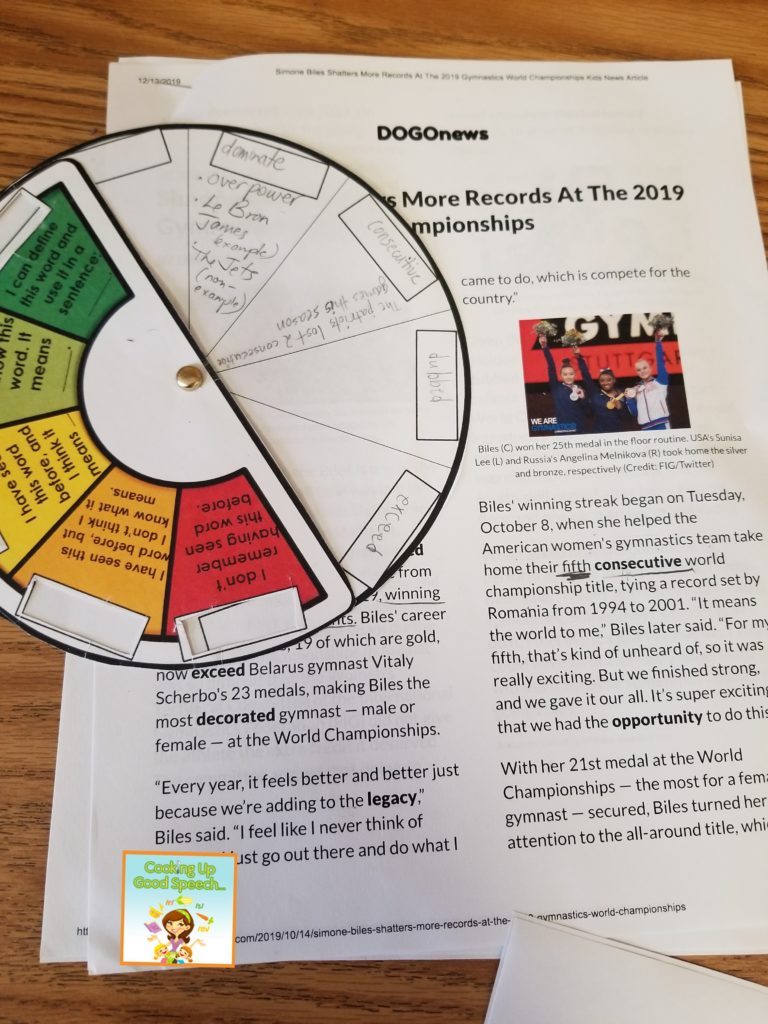
Previewing vocabulary achieves the following:
1- Activates prior knowledge.
2- Clears up any misconceptions about word meaning.
3- Clarifies the meaning of known words in relation to the context they are used in (especially for words with multiple meanings).
4- Most importantly, it provides some familiarity with unknown words so students can make sense of the text when they read.
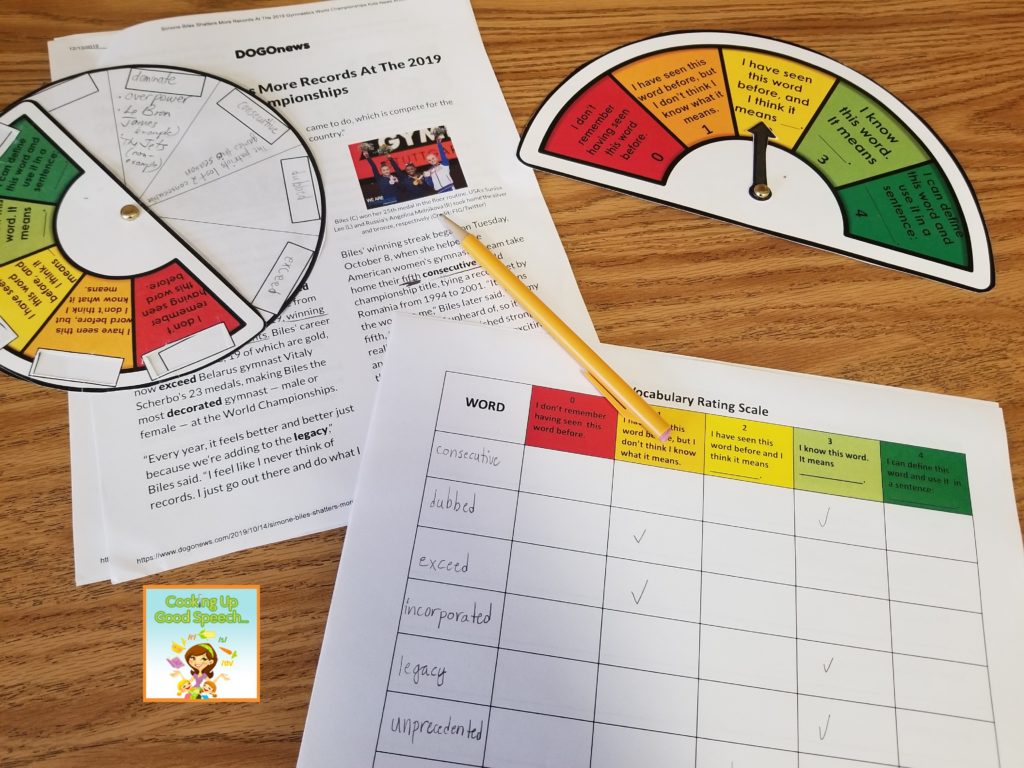
What words should be previewed?
- Choose words that are necessary to understand the text.
- Choose words that are essential to understanding the major concepts in the content lesson or unit of study.
- Choose words that are tier-2 academic words (e.g., analyze, relationship, synthesize).
- Choose words that are unfamiliar to most of the students.
The Vocab-Lab consists of three tools and is designed for use with a wide range of ages/ability levels! Younger students will find it easy to use and understand. Older students will be pleased to see that it is simple yet not juvenile—an effective and functional way for all of your students to learn vocabulary!
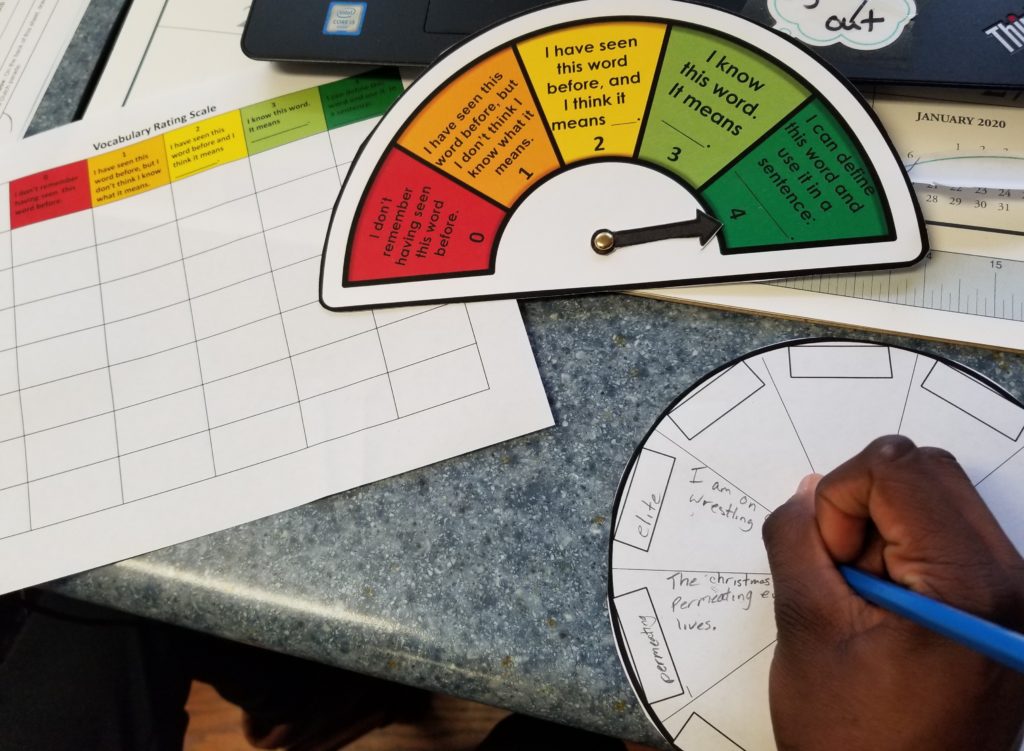
1–The Vocab-Meter is designed as a multi-sensory rating scale consisting of a range of colors with coinciding numbers and written cues. The color range includes red, orange, yellow, light green and dark green with a number scale of 0 to 4.
Prep your Vocab-Meter according to the directions on each page, then get ready to use this tool over and over all year long! Let your students determine which color and number the arrow should point to, according to their level of understanding of each vocabulary word you address. It will be very rewarding for both you and your students to see the “needle move” to a better rating and closer to green, after you “dig deeper” to learn words.
2–The Vocab-Wheel can be used to pre-teach vocabulary in a passage or any new vocabulary you are introducing in an activity.
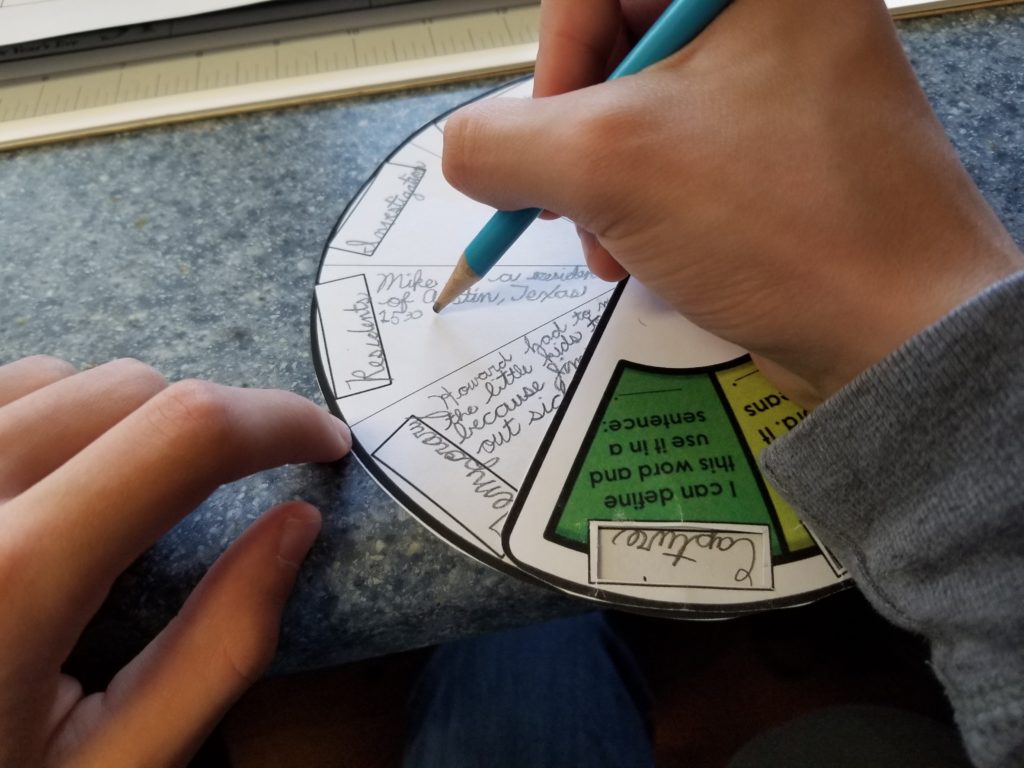
How to use the sections on the wheel:
1-write the vocabulary you are addressing in each of the boxes.
2- write synonyms, antonyms, examples, sentences, definitions in the sections below the box.
3–Use The Vocab Rating Scale to visually organize and keep track of the words your students are learning. Use it to collect data and note progress or let your students use it to keep account of the new words they are learning.
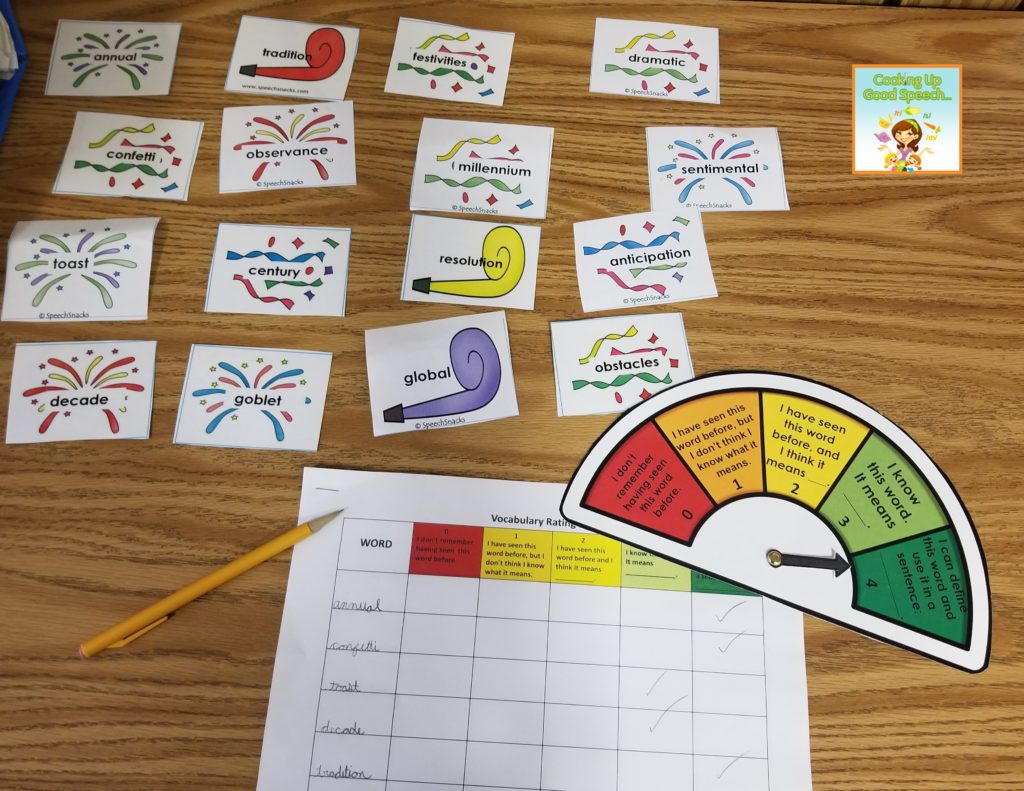
Use The Vocab-Lab with tons of vocabulary-based activities from my TpT store:
- Language Advisor: A Trip through our National Parks
- Language Advisor: A Trip Through the Emerald Isle
- New Year’s Resolution Race
- Vocabulary Building for Older Students
- A Cornucopia of Tier 2 Words
- The Night Before Christmas Companion
- Do You Want to Build a Snowflake?
- Talk Like a Pirate Language Games
- Halloween Vocabulary Building–Mum’s the Word!
- Spring Vocabulary with Magic Squares
- I Heart Homophones
- February Langauge Building for Heart Health Month
- Choosing the Right Word
- Cariboo Is for Older Kids Too!
- Speech Is Like a Box of Chocolates
More ways to use The Vocab Lab…..
Use The Vocab-Lab when addressing content-area vocabulary and help support the information your students are learning in their classes.
Use The Vocab-Lab in conjunction with some of these fantastic student-friendly websites that contain leveled vocabulary:
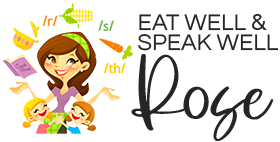










Leave a Reply